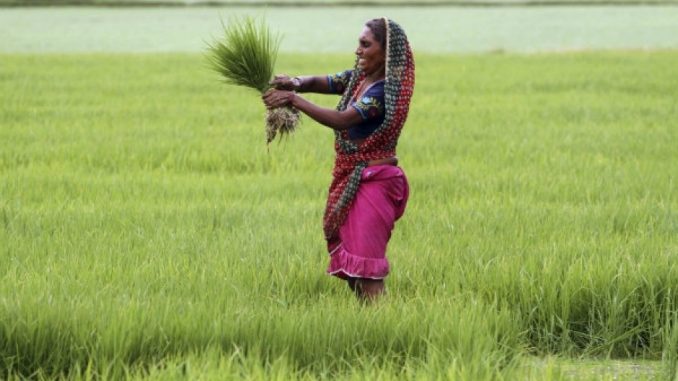
By Hema Swaminathan
With men migrating to cities for better jobs, women are now playing a critical role in farming, but they face many odds
Women have made significant contributions to agriculture in India. The current situation of rural transformation has brought to light women’s roles in agriculture. Typically, any discussion on this topic tends to focus on the most obvious trends; the proportion of women working in the agricultural sector as self-employed, unpaid help or wage labour.
What is ignored is an important and interesting shift in women’s roles: women are increasingly participating in farms as managers and decision-makers.
One of the principal drivers pushing women into farm management is male out-migration from rural to urban areas in search of a better life. But what happens to women left behind in these rural households?
Migration is an important strategy for livelihood diversification, particularly for rural households. In India, short-term migration, not permanent migration, is responsible for worker mobility, with studies showing men are more likely to migrate than women.
Certainly, there will be some labour adjustment in the households left behind in the migrant’s origin community.
How this is managed will depend on household size and structure (joint or nuclear family), social norms, and expectations of men and women’s responsibilities. It is reasonable to expect that these factors will affect men and women differentially.
Going away
To explore this further, I along with my collaborators S Chandrasekhar (Indira Gandhi Institute of Development Research) and Soham Sahoo (University of Gottingen), analysed data from the National Sample Survey Organisation’s (NSSO) Survey on Land and Livestock Holdings.
This survey was conducted in rural India from January to December 2013 covering 35,000 households across two visits.
For the first time in India, the NSSO survey collected information on short-term migrants and if any household member was an operator of the land cultivated by the household. An operator could be either a main or an associate operator and is one who makes major or minor decisions, respectively, about the household operational holdings.
Estimates from our data show that in 2013, 11.8 million women and 85 million men aged 15-65 were the main operators.
Our results further suggest that women are less likely than men to be either main or an associated operators. Interestingly, in households with a short-term migrant, women are more likely to be an operator.
This suggests that in the absence of men (although we do not know the sex of the migrant from the survey; literature indicates that migrants are mostly male), women are making farming decisions.
Beyond farming
Furthermore, we see that with higher education levels, men are more likely to move out of agriculture. Presumably, they are looking for lucrative employment options beyond farming.
However, as the amount of land they possess increases, men are more likely to be operators, while having no effect on women’s involvement as operator.
There is a lot of concern in India regarding the steady decline in women’s labour force participation. Many studies have examined this phenomenon with various explanations as to why women are exiting the labour market. Various explanations have been put forth: girls are studying more; rising household incomes reduce the need for women’s supplementary earnings; social norms prefer women’s time to be focused on child care and other home activities.
Others point to India’s unique structural transformation wherein the agriculture-led economy transitioned to a service-led one.
The lack of a robust manufacturing sector led to economic growth without adequate employment generation. While this affects all individuals, women’s job opportunities were disproportionately impacted.
However, there has been much less focus on women in rural areas. Our results suggest that women from the ten million rural households with a short-term migrant are more likely to be involved in decisions pertaining to the operation of land.
Unfortunately, national agricultural policies are not geared to cater to these women farmers. In India, our policy makers are still guided by the perception, “think farmer, think male.”
Lacking recognition
Often, women are not given due recognition as farmers which hampers their ability to access productive input. Extension services typically engage with male farmers, while ignoring women as it is assumed that women do not manage the farm.
The potential downside to women taking on the responsibility of managing farms is the increased workload accompanied by no reduction in other duties. This could reduce leisure time, which could, in turn, impact their sense of well-being.
However, further data needs to be collected and analysed to explore this in detail. We would need to know the working hours of men and women, as well as time use data. Collecting such data in a migration survey would greatly aid our understanding of how women fare in households left behind in the migrant’s origin community.
Attitudes regarding women’s roles in agriculture must change, as must their access to physical and financial resources so that they can effectively do their jobs. Given the dearth of employment options in rural areas, short-term male migration is only likely to increase in the future.
Thus, the onus is on policy makers to create a favourable ecosystem for women engaged in farming by ensuring greater access to physical and financial resources.
The writer is an Associate Professor at the Centre for Public Policy, IIM-Bangalore. This article is by special arrangement with the Center for the Advanced Study of India, University of Pennsylvania.
Source: Hindu Business Line

Leave a Reply